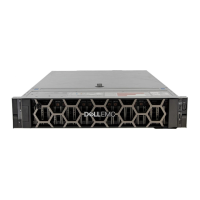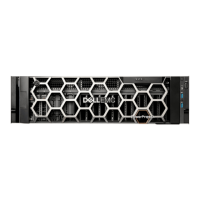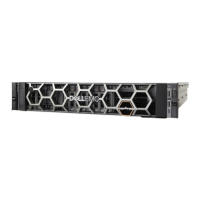Connecting through the CLI port using a serial
cable
To connect through the CLI port using a serial cable, you must use the 3.5mm stereo plug CLI port and the supplied 3.5mm/DB9 serial
cable. Alternatively, you can use a generic mini-USB cable (not included) and the USB CLI port. If you plan on using a mini-USB cable, you
will need to enable the port for communication. See also
CLI port and mini-USB cable.
The CLI enables you to access the system using the USB (Universal Serial Bus) communication interface or the 3.5mm Stereo plug and
terminal emulation software
NOTE:
• If you are using the mini-USB CLI port and cable, see CLI port and mini-USB cable
• Unless using Windows 10 or Server 2016, Windows customers should download and install the device driver as described in
Obtaining the software download.
• Linux customers should prepare the USB port as described in Setting parameters for the device driver.
Figure 65. Connecting a USB cable to the CLI port
1 Skip this step if using the 3.5mm/DB9 seral cable. If using a mini-USB cable, enable the CLI port for subsequent communication:
• Linux customers should enter the command syntax provided in Setting parameters for the device driver.
• Windows customers should locate the downloaded device driver described in Obtaining the software download, and follow the
instructions provided for proper installation
2 Start and congure a terminal emulator, such as HyperTerminal or VT-100, using the display settings used in Table 29. Terminal emulator
display settings, and the connection settings in Table 30. Terminal emulator connection settings. See the note following this procedure.
A
Connecting through the CLI port using a serial cable 141

